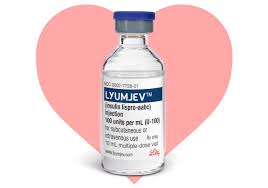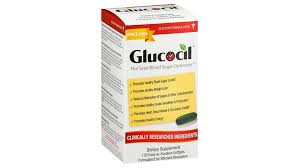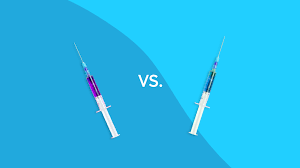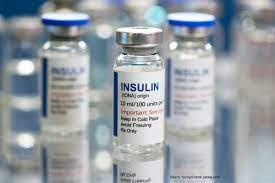As we age, many of us become increasingly aware of the changes our bodies undergo. One such change is the decline in Human Growth Hormone (HGH) production. Often associated with growth and development during childhood and adolescence, HGH continues to play a crucial role in adult health.
To address this decline, many people look into “HGH for Sale Now” as a quick fix. However, it’s vital to consider the safest ways to buy HGH online to avoid the risks associated with unregulated products. This article will delve into natural strategies such as strength training, stress reduction, and proper nutrition, which can support healthy HGH levels, helping you maintain vitality, muscle mass, and overall well-being as you age.
Understanding HGH: What It Is and Why It Matters
Human Growth Hormone (HGH) is a peptide hormone produced by the pituitary gland. It’s essential for growth during childhood but continues to be important in adulthood for maintaining healthy body composition, muscle growth, and metabolism. HGH influences everything from muscle mass and bone density to mood and cognitive function.
HGH promotes growth, cell repair, and metabolism. It also increases protein synthesis, supports the immune system, and helps maintain proper brain function. As we age, HGH levels naturally decline, which can lead to a decrease in muscle mass, an increase in body fat, and a slower metabolism.
Why HGH Levels Decline with Age
HGH production peaks during adolescence and starts to decline around the age of 20. This decline continues throughout life, which is a normal part of the aging process. By the time you reach middle age, your HGH levels may be significantly lower than they were in your youth.
Certain lifestyle factors can accelerate the decline of HGH. Poor diet, lack of exercise, insufficient sleep, and chronic stress are all contributors. Understanding these factors is crucial in addressing and improving HGH levels naturally.
The Benefits of Maintaining Optimal HGH Levels
Maintaining healthy levels of HGH can have numerous benefits:
- Improved Muscle Mass and Strength: HGH stimulates muscle growth by promoting protein synthesis and increasing muscle cell regeneration. This can lead to enhanced strength and physical performance.
- Enhanced Metabolism and Weight Loss: HGH plays a role in regulating metabolism, which can help with fat loss and maintaining a healthy weight.
- Better Skin Health and Appearance: HGH promotes collagen production, which can improve skin elasticity and reduce the appearance of wrinkles, giving you a more youthful appearance.
- Increased Energy and Endurance: Higher HGH levels are associated with better energy levels, improved endurance, and quicker recovery times after exercise.
Natural Ways to Boost HGH Production
There are several effective, natural ways to enhance your body’s HGH production:
Dietary Adjustments
Eating a balanced diet rich in nutrients supports overall health and helps maintain optimal HGH levels. Certain foods can specifically enhance HGH production.
Foods high in amino acids, particularly arginine, and glutamine, have been shown to promote HGH secretion. Include lean meats, eggs, dairy, and legumes in your diet to boost your intake of these essential nutrients.
Exercise and Physical Activity
- High-Intensity Interval Training (HIIT): HIIT involves short bursts of intense exercise followed by rest periods. This form of exercise has been shown to significantly increase HGH levels due to the intense physical demand it places on the body.
- Resistance Training and Its Effects on HGH: Resistance training, such as weightlifting, stimulates HGH production by increasing the release of the hormone during and after workouts. Incorporating compound movements like squats, deadlifts, and bench presses can maximize HGH release.
Sleep Optimization
HGH is primarily released during deep sleep. Ensuring you get enough quality sleep is crucial for maintaining and boosting HGH levels.
To optimize sleep, create a bedtime routine, keep your bedroom cool and dark, and avoid screens before bed. Practicing relaxation techniques like meditation or deep breathing can also improve sleep quality.
Intermittent Fasting
Intermittent fasting has been shown to increase HGH levels due to the metabolic and hormonal changes that occur during fasting periods. Fasting triggers the body to produce more HGH to protect muscle mass and promote fat burning.
Start with a 16:8 fasting-to-eating ratio, where you fast for 16 hours and eat during an 8-hour window. This method is manageable for most people and can effectively increase HGH levels.
Chronic stress increases cortisol, a hormone that can suppress HGH production. Managing stress is therefore vital to maintaining healthy HGH levels.
Engage in activities that reduce stress, such as yoga, meditation, or spending time in nature. Regular exercise and hobbies can also help lower stress levels.
Supplements to Support HGH Production
If you’re looking for an additional boost, certain supplements may help:
L-Arginine and L-Ornithine
L-arginine and L-ornithine are amino acids that can stimulate HGH release, especially when taken before exercise. They work by enhancing the secretion of HGH during and after physical activity.
GABA (Gamma-Aminobutyric Acid)
GABA is a neurotransmitter that promotes relaxation and deep sleep, indirectly supporting HGH production. Taking GABA as a supplement can enhance your body’s natural HGH release during sleep.
Melatonin
Melatonin, a hormone that regulates sleep, can also boost HGH levels by improving sleep quality. A small dose before bed can help regulate your sleep cycle and support HGH production.
Glutamine
Glutamine is another amino acid that can stimulate HGH production, particularly when taken in small doses before bedtime. It’s also beneficial for muscle recovery and immune function.
Lifestyle Habits to Avoid for Maintaining HGH Levels
While adopting positive habits is essential, it’s equally important to avoid practices that can suppress HGH production:
- Overeating and Sugar Intake: High sugar intake can spike insulin levels, which can suppress HGH production. Additionally, overeating can lead to weight gain and increased body fat, both of which negatively impact HGH levels.
- Chronic Stress: As mentioned earlier, chronic stress raises cortisol levels, which can inhibit HGH production. Managing stress through healthy outlets is critical for maintaining HGH levels.
- Sedentary Lifestyle: A sedentary lifestyle leads to muscle atrophy and decreased HGH production. Regular physical activity, especially exercises that challenge the body, is essential for maintaining HGH levels.
Consulting a Healthcare Professional
Before making any significant changes to your lifestyle or considering HGH supplements, it’s important to consult a healthcare professional:
If you suspect an HGH deficiency or are considering HGH therapy, speak to your doctor. They can run tests to determine your HGH levels and provide guidance tailored to your specific needs.
HGH therapy can be effective for treating deficiencies but comes with risks, including side effects like swelling, joint pain, and increased cancer risk. A healthcare professional can help weigh these risks against potential benefits.
For individuals managing weight-related metabolic concerns alongside HGH optimization, modern treatments like GLP-1 receptor agonists may also be considered — with options such as a hassle-free online purchase of Semaglutide available under proper medical guidance.
Conclusion
Increasing HGH after 20 is possible through a combination of natural methods, including dietary changes, regular exercise, improved sleep, and stress management. While supplements can offer additional support, the foundation for maintaining healthy HGH levels lies in a healthy lifestyle. By adopting these practices, you can enjoy the benefits of optimal HGH levels, such as increased energy, better muscle mass, and improved overall health.















